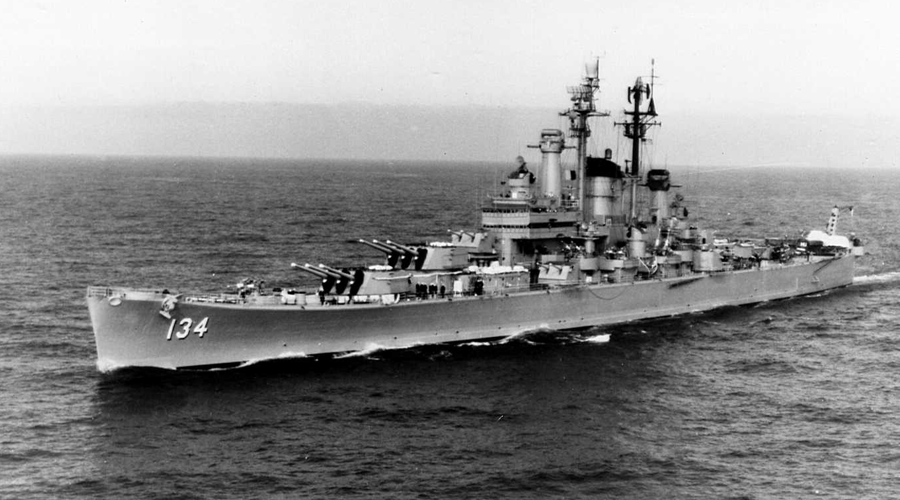The Navy’s last all gun heavy cruiser was the Des Moines class built by Bethlehem Steel Company Fore River, Quincy Massachusetts. The United States Navy used the Baltimore class of heavy cruisers as the blueprint, making Des Moines larger and upgraded with a newly developed semiautomatic 8”gun. It was obvious that naval planners expected a longer war with twelve cruisers proposed. However, only three ships of the class were completed, the nine remaining ships were cancelled at the end of World War II. The three were Des Moines CA-134, Salem CA-139 and Newport News CA-148. Designation “CA: stands for heavy cruiser and “CL: stands for light cruiser.
The ship was home to 1500 officers and men who had some of the conveniences of the larger battleships, like a crew lounge, library, retail store, dental and medical spaces, post office, barber shop, soda fountain and laundry. The Des Moines also published its own bi-monthly newspaper and movies were shown nightly. The ship was named “Daisy Mae” from a crew contest to name the onboard ships paper. The name was picked from the popular cartoon strip in the 1950’s “Li’l Abner,” and the name stuck as the Des Moines’ nickname.
Daisy Mae had a varied operating schedule designed to maintain the readiness of the Navy to meet the “24 hour, 7 days a week, 365 days of the year” demands of defense. Her job was to remain ready for the next conflict to come, cruising from her home port at Newport, Va. and after 1950, from Norfolk, Va. The Des Moines was part of all types of exercises in the North Atlantic, Mediterranean and in the East Coast waters serving as a flagship for the 6th Fleet.
On February 18, 1958, she left Norfolk for the Mediterranean once more, this time to remain as flagship for the 6th Fleet until July 1961, when she was placed out of commission in reserve. In her day she hosted many dignitaries, including President Dwight Eisenhower, Her Majesty Queen Elizabeth II of England, King Paul and Queen Fredrika of Greece, Ali Kahn, Prince Albert of Belgium, and many more.
Her class was completed too late for service in World War II but they were employed extensively as fleet flagships during their active careers. The Des Moines was completed with two stern catapults and had capacity for four floatplanes; the catapults were not completed. Instead she operated utility helicopters on the stern with a hangar plus an elevator. Her weapons were massive: main 8-inch guns in three triple turrets had a muzzle velocity of 2,800 ft. per second with a range of 30,100 yards. Each shell weighted 260 pounds, with armor piercing shells weighing 335 pounds. Each 451-ton turret had a crew of 45 men and the guns had a rate of fire of 10 rounds per minute. The ammo resembled the 5-inch shell, having the projectile incased in a brass cartridge. Not having the silk powder bag as the propellant increased the rate of fire and the safety for the crew.
After decommissioning in 1961, the Des Moines was mothballed in the South Boston Naval Annex and eventually at Philadelphia, where she remained until 2006. After an attempt failed to turn her into a museum ship she was towed to Brownsville, Texas for scrapping in July 2007.
Image and Text by www.MilitaryFactory.com

